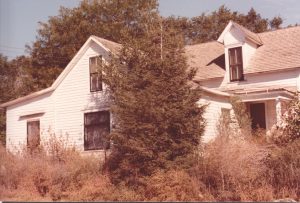My last post included the text of an 1876 newspaper article about the death of my great-great-grandparents’ first two children. This is a long-standing family legend that has at least been substantiated by an outside source! I was able to track down the details thanks to a daily diary kept by a neighbor, Charles Hadsall.
Based on this newspaper account, here are the new facts brought to light:
- The oldest child, a boy, was 17 months old on May 12, 1876. That means he was born in about December 1874. Family legend is that the child’s name was Peter.
- The younger child (the article doesn’t say the gender, but family legend is that the baby was a boy named Oscar) was four weeks old at the time of his death. That means he was born in April 1876.
Here are some other reflections about the newspaper article:
- “Burned to a crisp.” Really? Did they have to phrase it that way?
- Notice that the article uses a nearly-correct Swedish spelling of the last name. In Sweden, the name would be spelled “Pehrsson”, the article uses “Pehrson”.
- Johanna was said to have never gotten over these deaths. The knowledge that the little boy died near the door must have been especially heartbreaking.
- We have never been able to locate graves for these children. I imagine they may have been buried somewhere on the farm.
- We might be able to now infer something about Christian’s and Johanna’s marriage date. If we do the “usual math”, she may have married Christian somewhere around March 1874. She left Sweden in April or May of 1873. So sometime in that window of time (April 1873 to March 1874) she met and married Christian.
- His Homestead application says he began living on the farm in May 1873. So he was already a homesteader when he married Johanna.

We have a photo of the house on the Pearson Homestead when it was abandoned but still standing in about 1979 (it is now gone). We don’t know if this was the house that was rebuilt after the 1876 fire, or perhaps it was an even later structure. Looking at the photo, it seems like there are many additions onto a central part of the structure. Perhaps that central part dated back to 1876.
